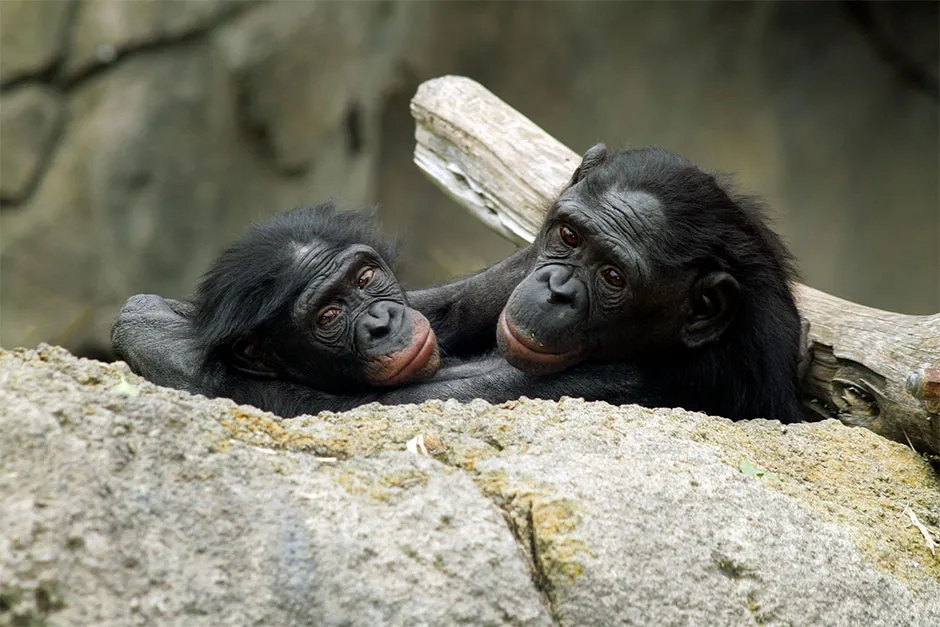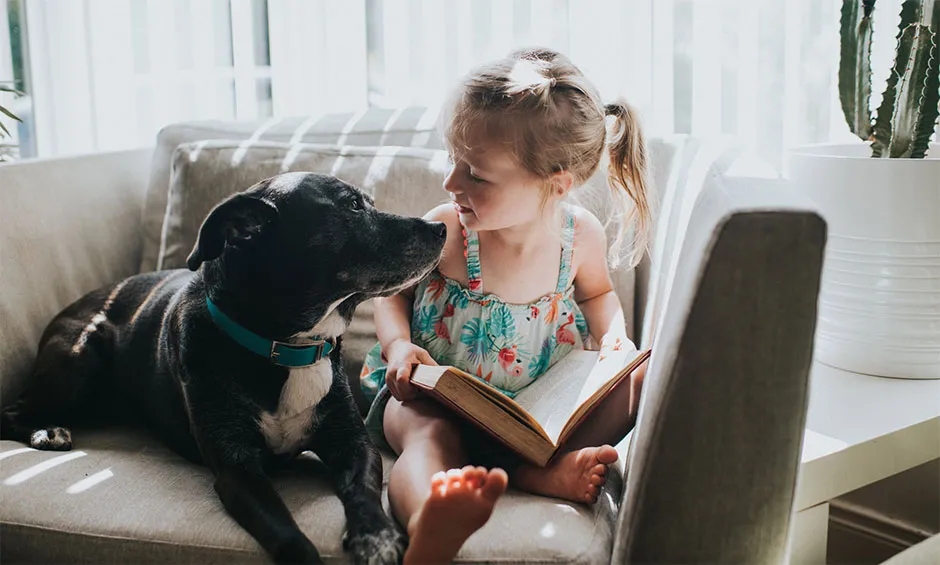Our views of human nature shape almost everything we do as a society. It informs who heal or ignore. Who we protect or persecute. And no view of human nature has done more harm than ‘survival of the fittest’. At its inception, it inspired the eugenics movement and now it promotes all forms of racism and discrimination.
But ‘survival of the fittest’, which in the popular imagination suggests the superiority of the strongest, biggest and meanest, is a tragic misunderstanding. To Darwin, and other biologists, ‘fitness’ only refers to the offspring you leave behind. It was never meant to go beyond that.
Using the intended definition of fitness, research has repeatedly shown that friendliness is the key to life’s biggest successes. Flowering plants quickly spread to every corner of the planet by inviting animals to pollinate them.
Cleaner wrasse comfortably dart between the teeth of much larger predatory fish who let them eat their dental parasites. And dogs are the ultimate example of survival of the friendliest – they became friendlier through domestication and are the most successful mammal on the planet, besides us.
Read more about friendship:
Even our closest primate cousins, bonobos and chimpanzees, show how friendliness wins.
In chimpanzees, the alpha male pummels his way to the top, forcing his groupmates to signal their total submission by kissing his testicles. Fights can be deadly. He uses his power to monopolise females and have more offspring than other males.
Bonobos do none of this. No bonobo group has ever been observed to have an alpha male. Instead, females, who are smaller than the males, form a coalition to prevent any one bonobo from ruling the group.
A male that uses force to get his way will be met by an alliance of females he cannot overpower, and who will then refuse to mate with him. Male aggression does not pay and as a result no bonobo has ever been seen to kill another bonobo.
If we look at biological ‘fitness’, who has the most reproductive success: alpha chimpanzees or more friendly bonobo males? It turns out that the most successful bonobo males leave more offspring than even the most despotic chimpanzees.
The friends you haven’t met
Friendliness in nature helps us understand our own nature. In the past 100,000 years our species, Homo sapiens, has co-existed with at least four other human species.
This includes Neanderthals, with brains as big, and bodies as strong, as our own. They had culture and technology that rivalled ours, but this did not protect them from extinction. If big brains and culture do not guarantee survival, why are we the last human standing?
Our success was due to a new social category – the in-group stranger. Bonobos and chimpanzees recognise those as inside or outside their group based on familiarity.

Chimpanzees respond negatively and bonobos positively to someone they do not recognise, but neither species has a group identity. Only we have shared signals we use to recognise if someone is part of our group.
Prehistorically, this might have been shared language, technology, or clothing. Today, these signals are a range of arbitrary but culturally constructed cues, like a baseball cap, rosary, skin colour, or an accent.
No other animal recognises in-group strangers. It is unique to our species. We are surrounded by people we do not know, and yet we are not just tolerant of these strangers, we actively help each other. This friendliness encourages us to perform acts of kindness both great, like donating an organ, and small, like helping someone cross the street.
Read more about friends in the animal kingdom:
- Rats avoid actions that will hurt others — even if it earns them a treat
- Dolphins prefer friends with similar interests
- Beluga whales make friends, just like humans
This new category of in-group stranger probably appeared in our species during the Middle Palaeolithic, more than 80,000 years ago, and allowed communities to become larger and more densely populated.
The minds of innovators were networked together and our capacity for technological innovation exploded. With improved tools, we could expand into a wider range of ecologies. Once the social calculus shifted, our unique form of friendliness gave us a major advantage over other human species.
The dark side of friendliness
Unfortunately, our increased friendliness created a new form of aggression. Group members had the ability to connect with each other, and the bonds between them were so strong, they felt like family. With this new concern for others came a willingness to violently defend them against threatening outsiders.
Social scientists have traditionally called this ‘dislike of other groups’ prejudice. However, our worst behaviours toward other groups cannot be explained as mere ‘negative feeling’ towards others. Just as we can embrace in-group strangers, we can blind ourselves to the basic humanity of those we feel threaten our group or its identity.
This blindness is a far darker force than prejudice – it is dehumanisation. When we do not view others as fully human, we morally exclude them. Our empathy narrows like a spotlight increasingly focused on those most like us.
People might vary in their predisposition to dehumanise, and levels of dehumanisation are impacted by socialisation, but all human brains are capable of dehumanisation.
Love is a contact sport
If our kindness is also the source of cruelty, how do we facilitate friendliness while keeping our darker side in check? The good news is, to break the cycle of dehumanisation there is a simple solution, and we know it works.
Friendship is the bridge between two groups. If we can remove that sense of threat, even for a short time, we can create a different kind of feedback loop that might be called reciprocal humanisation.
For example, people are less likely to dehumanise homosexuals if they know a homosexual through their network of friends. Israeli and Palestinian teenagers who went to three week camp together listed someone from the opposite side as a friend and reported more positive feelings towards the opposite group as a whole.

In a time of social distancing, when friendships are difficult to maintain and new friendships are almost impossible to form, we can still short circuit our tendency to dehumanise.
One study found that just imagining positive contact with one of the most dehumanised groups of people – the homeless – helps people to empathise with them. Even using humanising words to describe people in an outside group can lead people to want to approach and make contact.
Now more than ever, we have a chance to become something new. One of the most important lessons we have learned about the last 100,000 years is that a life should not be measured by how many enemies you have conquered, but by how many friends you have made.
Survival of the Friendliest: Understanding Our Origins and Rediscovering Our Common Humanity by Brian Hare and Vanessa Woods is out now (£16.99, Oneworld).
- Buy now from Amazon UK, Waterstones or WHSmith